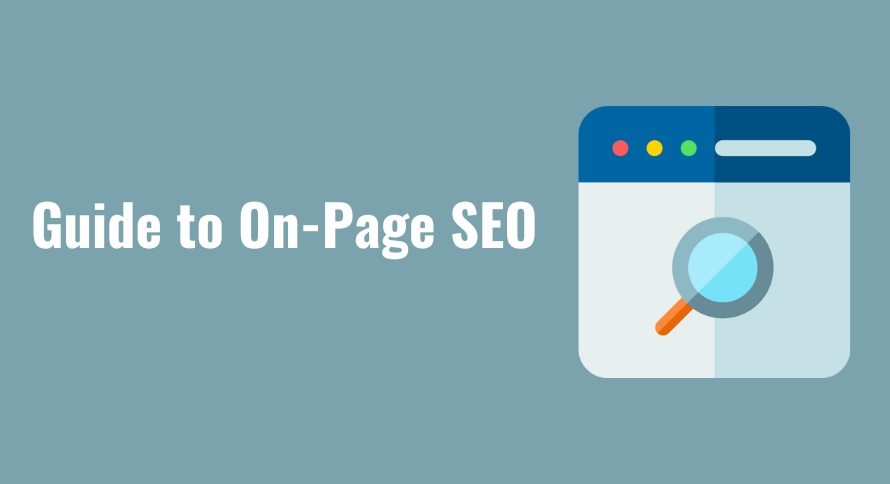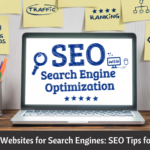Search engine optimization (SEO) is an invaluable tool for businesses that want to increase their visibility online, especially when considering an SEO agency India. It helps to ensure that your website appears at the top of search engine results pages. On-page SEO is an important part of any SEO strategy, and it involves optimizing content on your website to make it more attractive to search engines. This guide will provide an introduction to on-page SEO, explain its benefits, discuss techniques for optimizing your website, and provide resources for further reading.
What is On-Page SEO?
On-page SEO is the practice of optimizing content on a website to make it more attractive to search engines. This includes optimizing page titles, meta descriptions, heading tags, image file names and alt text, internal links, and keywords. On-page SEO is an important part of any SEO strategy, and can be used to improve a website’s rankings in search engine results pages.
Benefits of On-Page SEO
On-page SEO can be used to improve a website’s visibility and rankings in search engine results pages. It can also help to ensure that your website is seen by the right people, as it can help to target specific keywords and topics. Additionally, on-page SEO can help to improve the user experience by making your website easier to navigate and more engaging.
On-Page SEO Techniques
On-page SEO involves optimizing content on your website to make it more attractive to search engines. Here are some on-page SEO techniques that you can use to improve your website’s rankings:
- Optimize Page Titles: Page titles should be concise and relevant to the content on the page. It should also include the main keyword for the page.
- Optimize Meta Descriptions: Meta descriptions are short summaries of the content on the page. They should be concise and include the main keyword.
- Use Heading Tags: Heading tags, such as H1, H2, and H3, are used to organize and structure content on a page. It is important to use them correctly to ensure that the content is easy to read and understand.
- Optimize Image File Names and Alt Text: Image file names and alt text should include the main keyword for the page. This will help to ensure that the images are properly indexed by search engines.
- Use Internal Links: Internal links are links that point from one page on your website to another. They should be used strategically to make your website easier to navigate and to improve the flow of traffic between pages.
- Optimize Keywords: Keywords should be used throughout the content on the page. They should be relevant to the content, and they should appear naturally. It is important to use them sparingly to avoid keyword stuffing.
On-Page SEO Tools
On-page SEO tools play a crucial role in optimizing your website’s content and structure to improve its visibility in search engine results. These tools help you implement effective on-page SEO strategies to enhance your website’s ranking and attract organic traffic. Here are some popular on-page SEO tools that can assist you in this process:
1. Yoast SEO: A widely-used WordPress plugin that offers real-time content analysis and optimization suggestions based on target keywords, readability, and meta tags. It helps you create SEO-friendly content and optimize page titles, meta descriptions, and headings.
2. SEMrush: This all-in-one SEO toolkit includes an on-page SEO checker that audits your pages for technical issues, content optimization, and backlink opportunities. It provides recommendations to improve your content’s SEO performance.
3. Moz Pro: Moz offers an on-page optimization tool that provides insights into how well your pages are optimized for target keywords. It also offers suggestions for improving on-page elements such as title tags, headings, and meta descriptions.
4. Ahrefs: Ahrefs’ Site Audit tool helps identify on-page issues like broken links, missing meta tags, and duplicate content. It also offers keyword suggestions and tracks your page’s ranking performance over time.
5. SurferSEO: This tool analyzes top-ranking pages for your target keywords and provides recommendations to improve your content’s relevancy and structure. It offers insights into keyword usage, content length, and heading distribution.
6. Screaming Frog: A website crawler that helps identify technical on-page issues such as broken links, duplicate content, and missing meta tags. It provides a comprehensive view of your site’s on-page health.
7. Google Search Console: Google’s free tool provides insights into how Google views your website. It alerts you to issues like crawl errors, mobile usability, and manual penalties. It also helps you optimize your content for better search visibility.
8. PageOptimizer Pro: This tool analyzes top-ranking pages and suggests optimizations to improve your on-page SEO. It offers recommendations for keyword usage, content structure, and internal linking.
9. Clearscope: Clearscope helps you create content that ranks by analyzing the top-performing pages for your target keyword. It provides insights into related terms and content elements to include for comprehensive coverage.
10. Textmetrics: Textmetrics offers real-time content analysis and optimization suggestions based on your target keywords. It helps you optimize your content’s readability, tone, and structure for improved search ranking.
Using these on-page SEO tools, you can effectively optimize your website’s content, structure, and technical aspects to align with search engine algorithms. By following their recommendations and implementing best practices, you can improve your website’s search visibility and attract more organic traffic.
Key Takeaways
On-page SEO is an important part of any SEO strategy, and it involves optimizing content on your website to make it more attractive to search engines. This includes optimizing page titles, meta descriptions, heading tags, image file names and alt text, internal links, and keywords. There are a variety of tools that can be used to optimize your website for on-page SEO.
Conclusion
On-page SEO is essential for businesses that want to increase their visibility online. It can help to ensure that your website appears at the top of search engine results pages, and it can also help to improve the user experience by making your website easier to navigate and more engaging. With the right tools and techniques, you can use on-page SEO to improve your website’s rankings and visibility.
FAQs
Q: What is on-page SEO?
A: On-page SEO is the practice of optimizing content on a website to make it more attractive to search engines. This includes optimizing page titles, meta descriptions, heading tags, image file names and alt text, internal links, and keywords.
Q: What are some on-page SEO techniques?
A: Some on-page SEO techniques include optimizing page titles, meta descriptions, heading tags, image file names and alt text, using internal links, and optimizing keywords.


